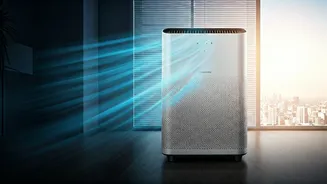Seal Your Home
One of the primary recommendations involves keeping your doors and windows shut, especially during times when pollution levels are at their peak. It is
particularly crucial to adhere to this practice during the most polluted hours of the day. This simple measure effectively prevents the influx of outdoor pollutants, such as particulate matter and harmful gases, from entering your home. By restricting airflow from the outside, you reduce the concentration of pollutants within your living spaces, contributing significantly to improved indoor air quality. By adopting this practice, it is possible to create a safer and healthier indoor environment, especially during periods of high outdoor pollution.
Purify Your Air
A highly effective method for combating indoor air pollution is to utilize high-efficiency air purifiers. These devices are specifically designed to filter out various pollutants, encompassing dust particles, allergens, and harmful gases, thereby enhancing the air quality within your home. To ensure optimal performance, it's recommended to select air purifiers equipped with HEPA filters. These filters are capable of trapping a significant amount of airborne particles, ensuring cleaner and safer air. To maximize the effectiveness of your air purifier, make sure it is appropriately sized for the space and that you consistently maintain and replace the filters as recommended by the manufacturer.
Humidity Control Matters
Maintaining optimal indoor humidity levels is another key factor in reducing indoor pollution exposure. It is generally advised to keep the relative humidity within the range of 30% to 50%. When the air is excessively dry, it can cause an increase in airborne particles, which exacerbates respiratory issues. On the other hand, excessively humid air promotes the growth of mold and mildew, which can trigger allergies and other health problems. By utilizing a humidifier or dehumidifier, as needed, and monitoring the humidity levels regularly, you can effectively manage the moisture content in your home, which is essential for preserving air quality and a healthy living environment.
Practice Personal Hygiene
Implementing stringent hygiene practices and personal protection measures is crucial in minimizing exposure to indoor pollution. This involves frequent handwashing to remove pollutants and germs that can accumulate on the skin. Furthermore, consistently wiping down surfaces, such as countertops and tables, will assist in reducing the presence of dust and other pollutants. Considering the use of face masks when venturing outdoors can also offer an additional layer of protection against the harmful effects of air pollution. Taking these proactive steps, particularly in areas highly affected by pollution, will significantly reduce the adverse effects on your health.














